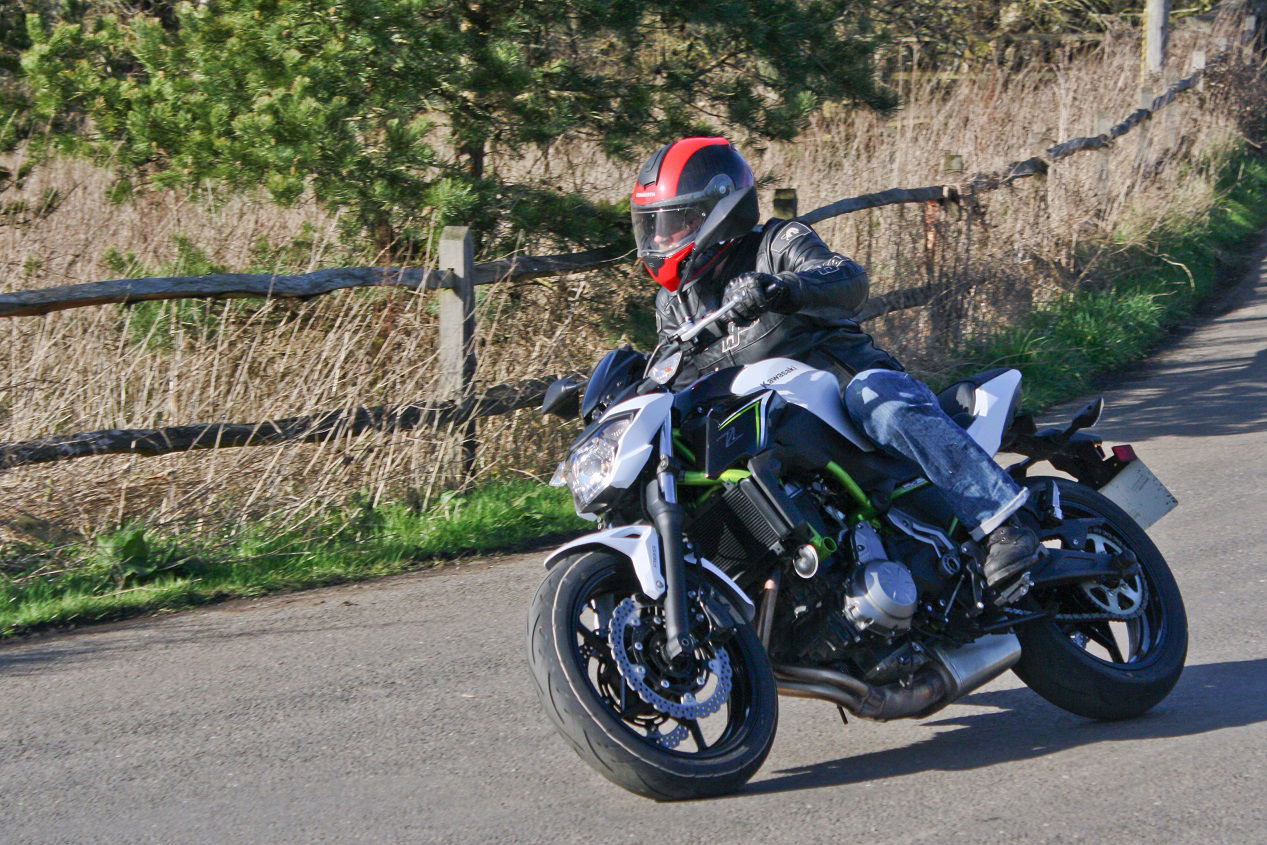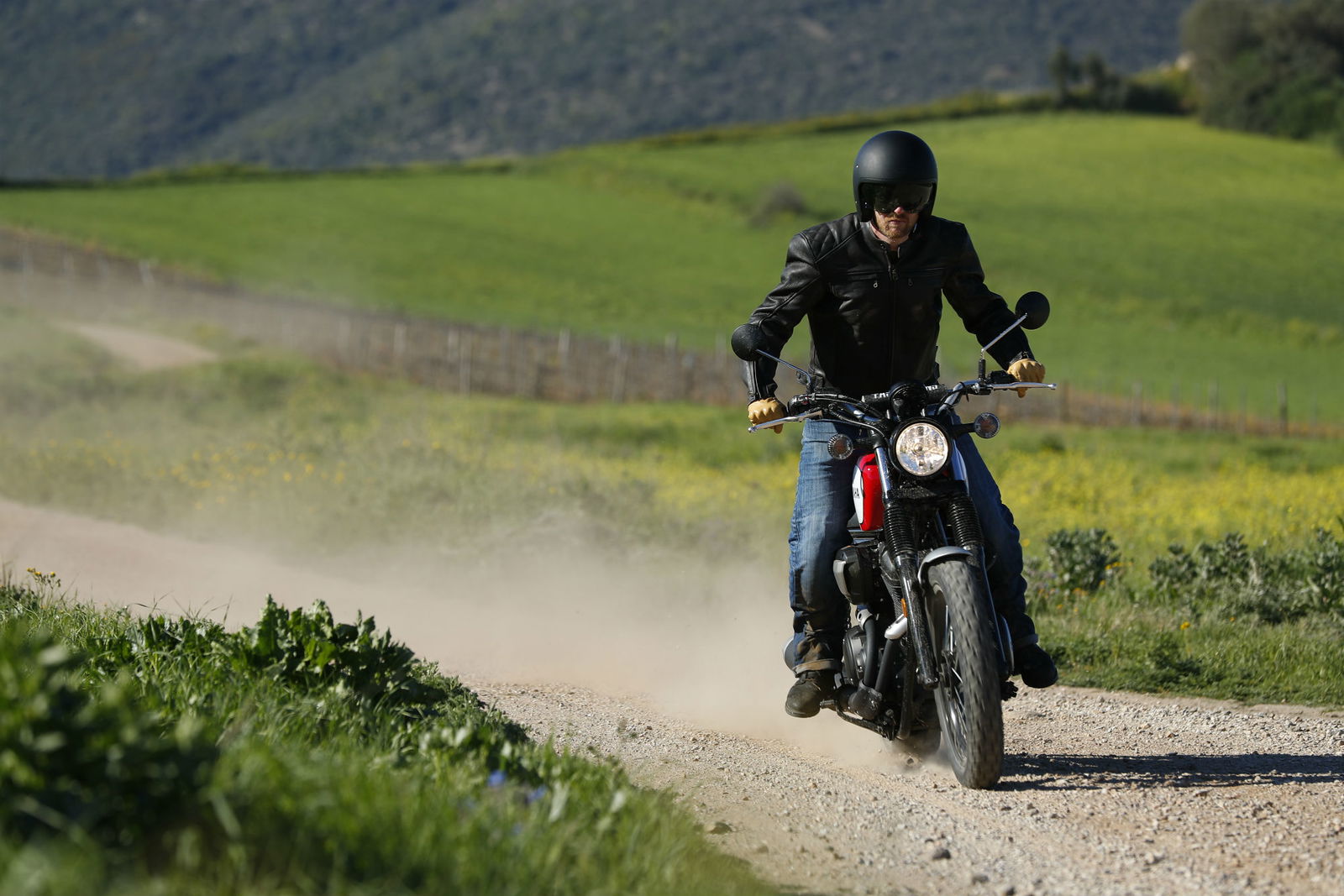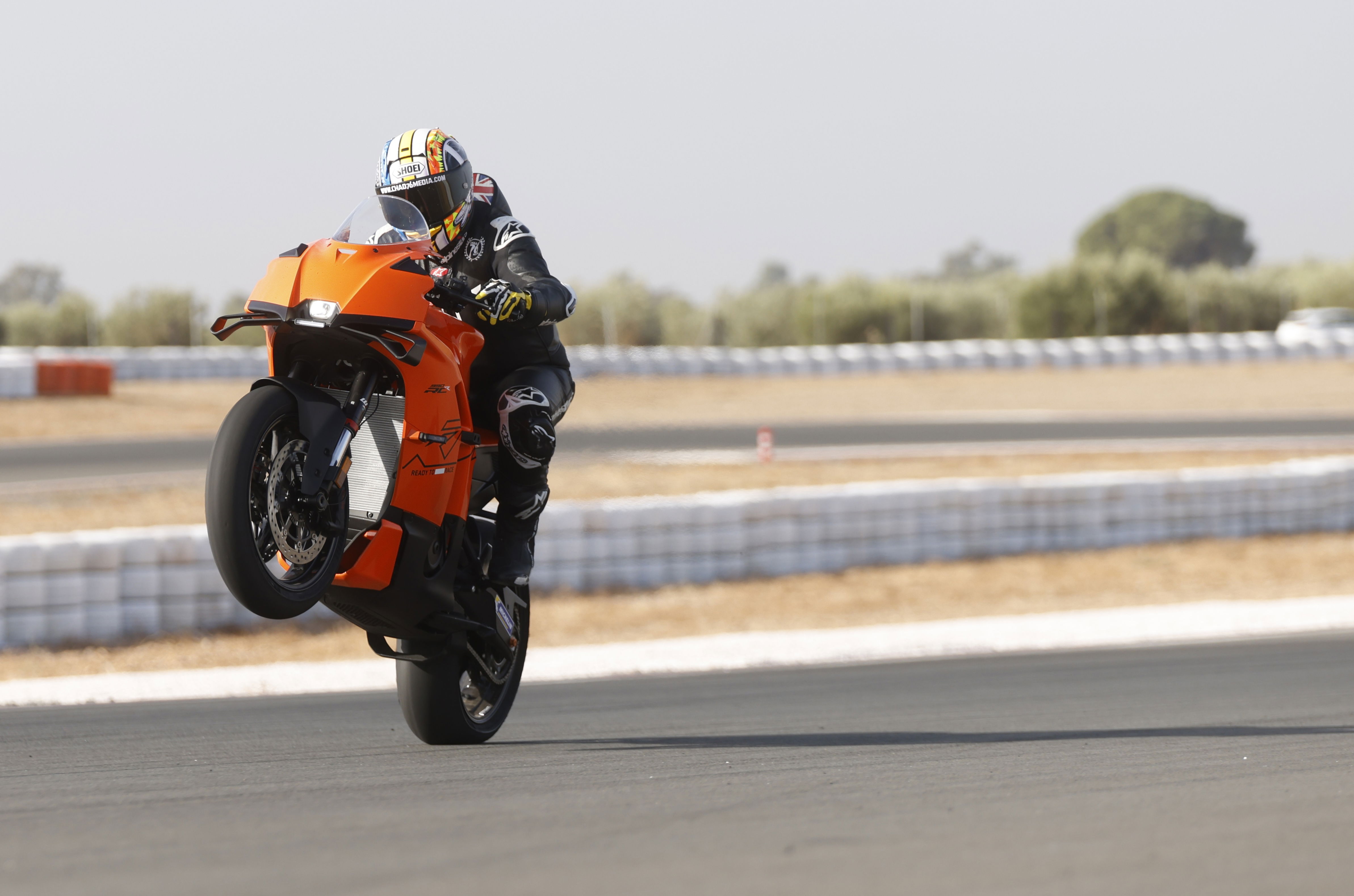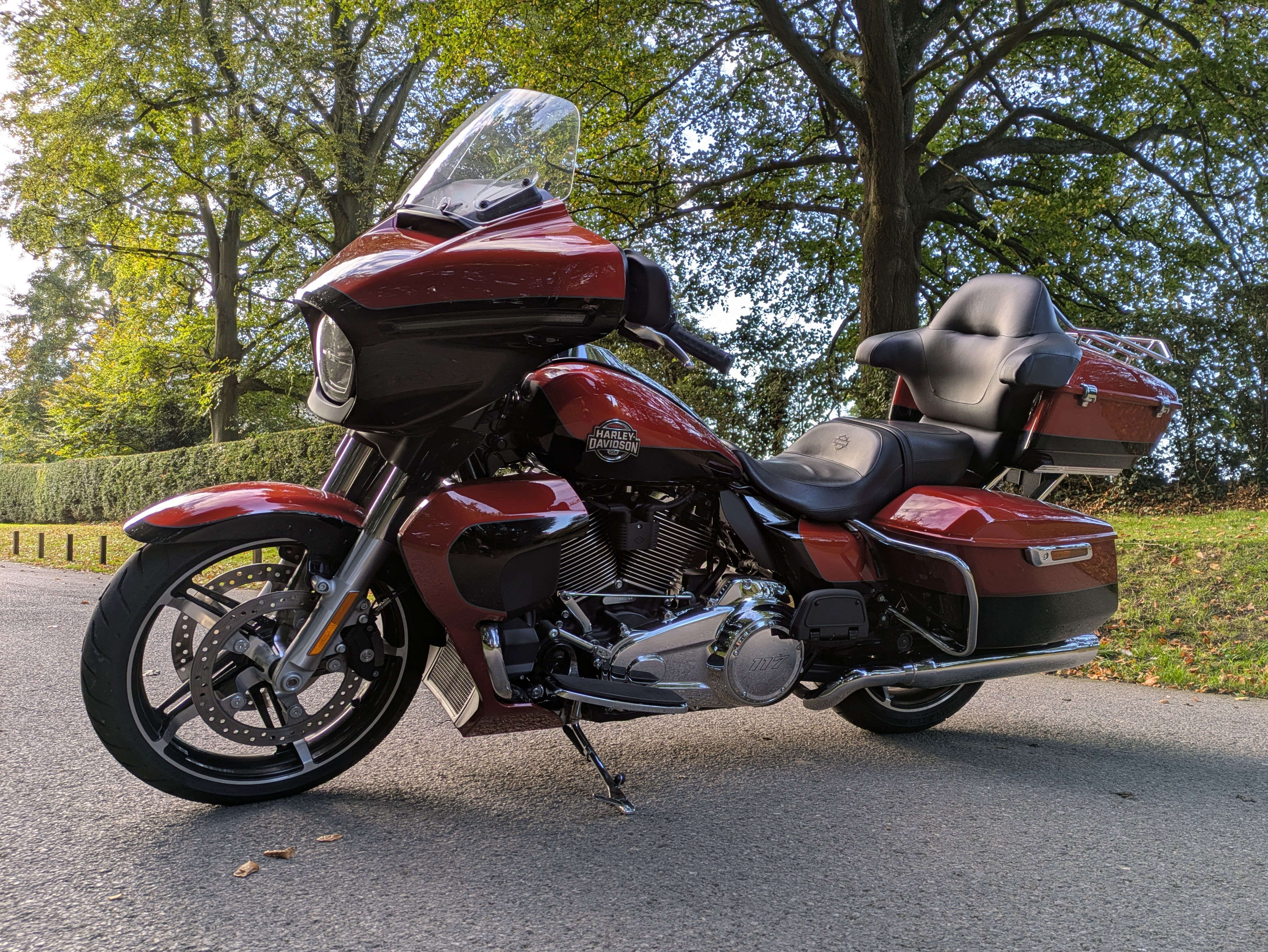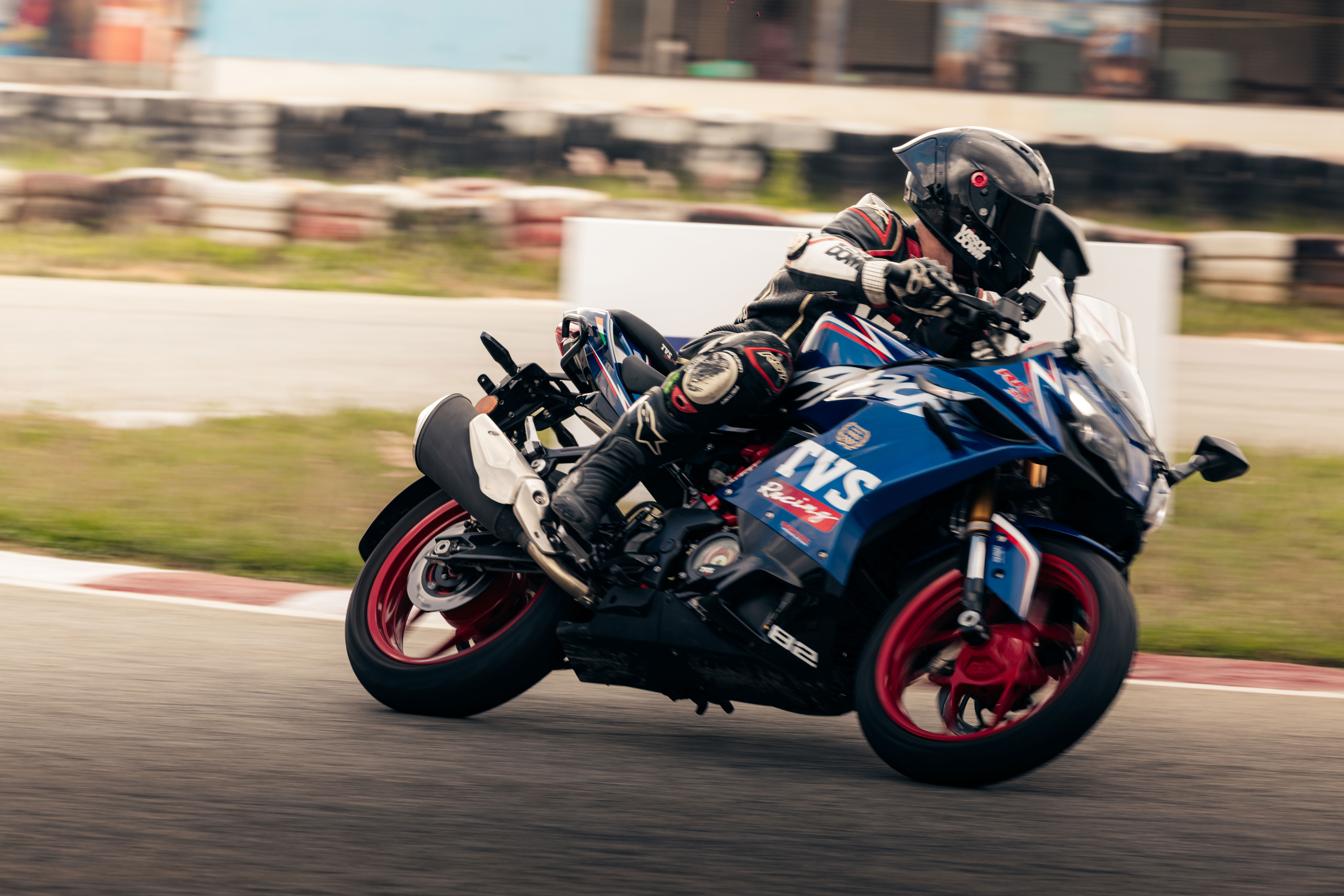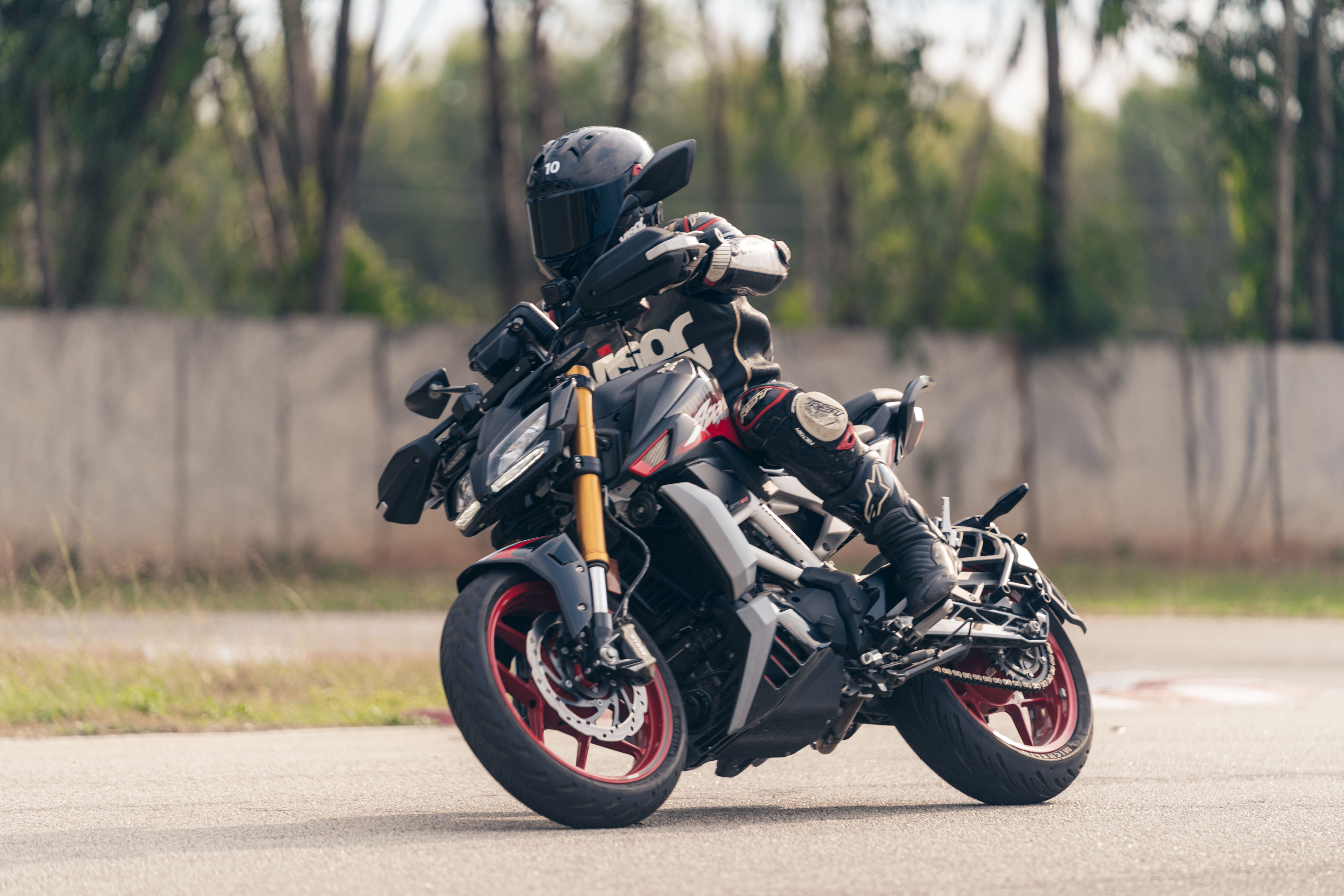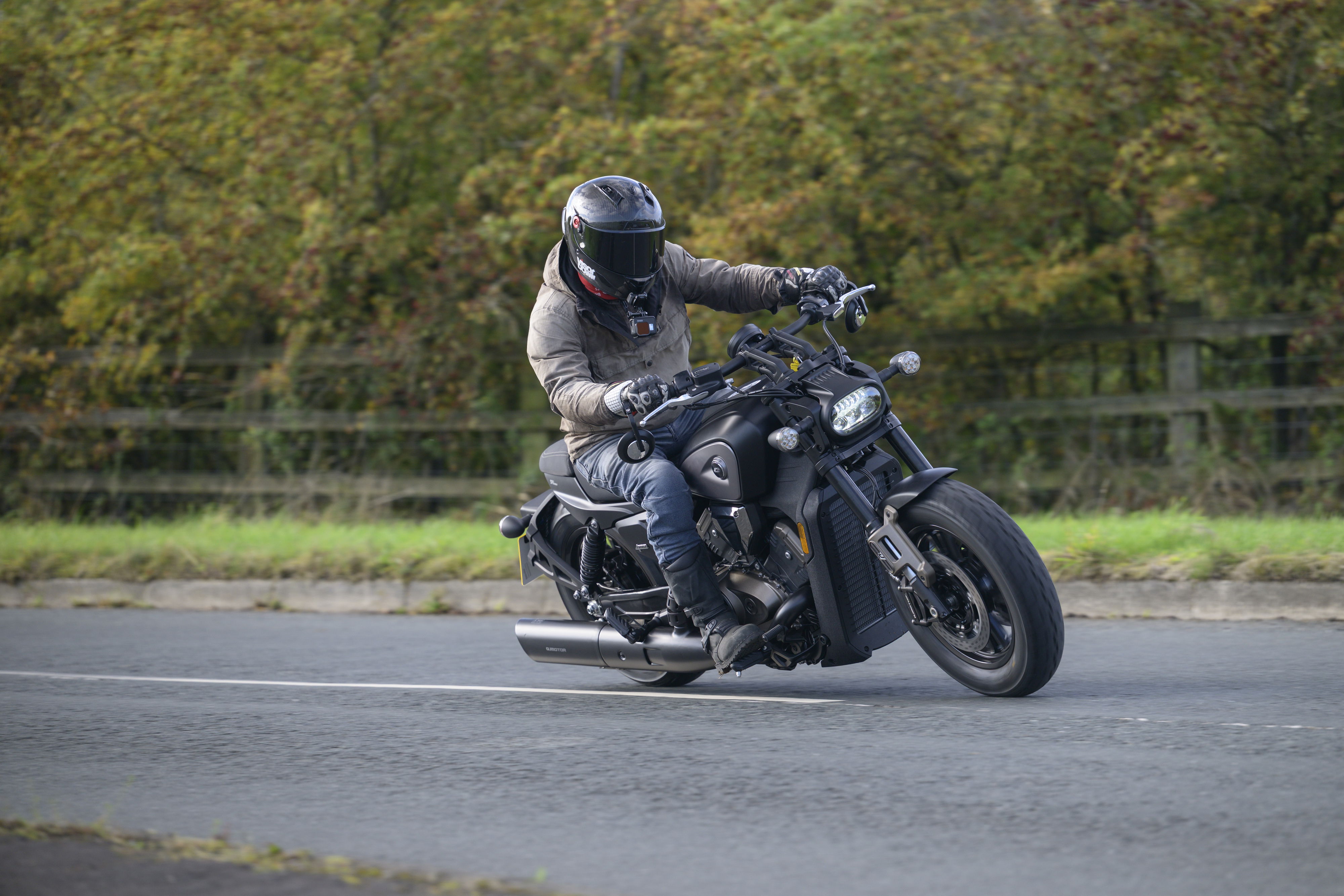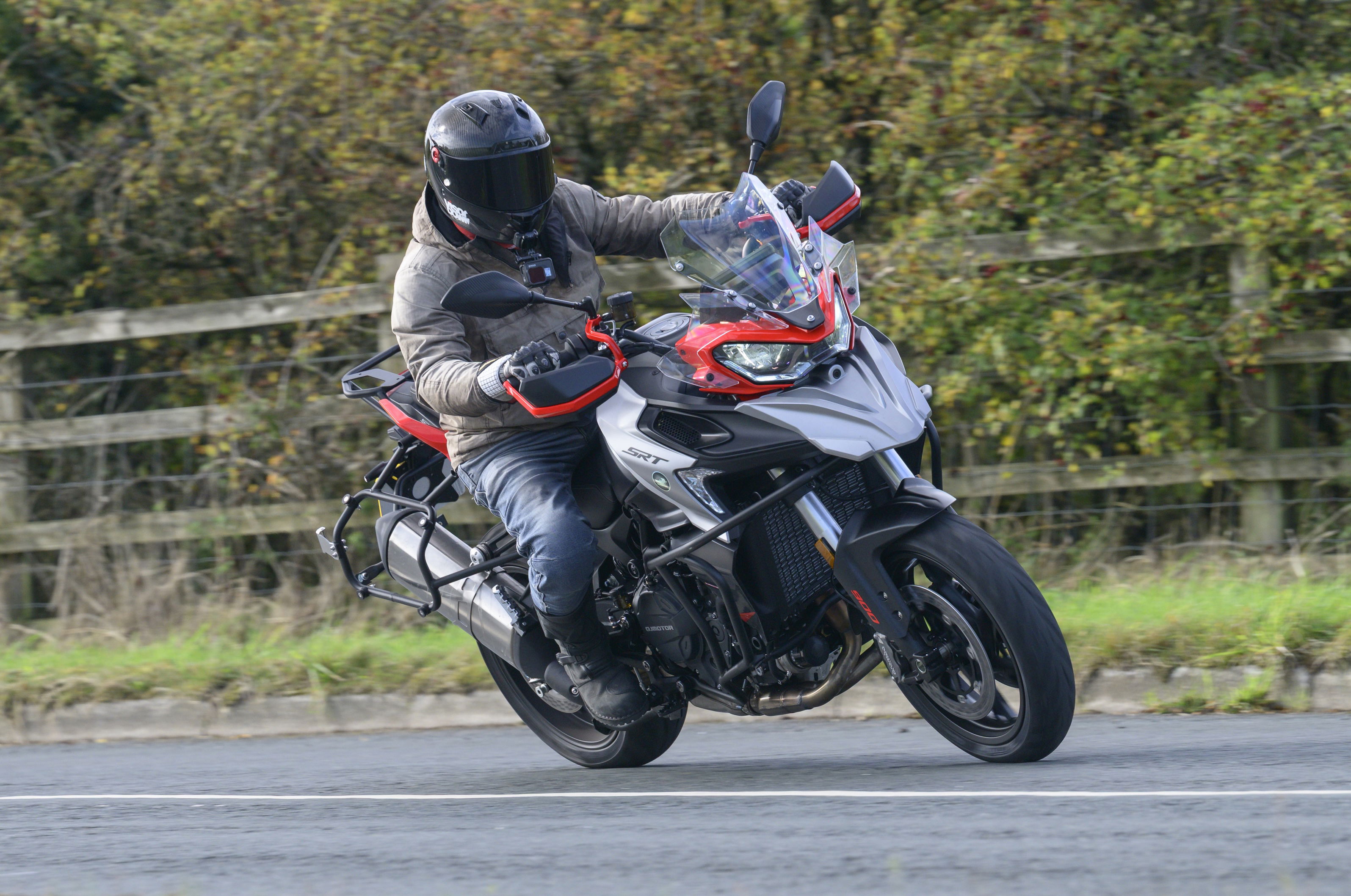First ride: 2017 Yamaha YZF-R6 review
Is the new R6 in a class of its own?

IT’S DIFFICULT to think of a bike class which has hit tough times as hard and as fast as the 600 supersports sector. Not so long ago, the 599cc inline-four sportsbike was common as dirt, a genuinely ubiquitous sight on the roads. Now? The manufacturers have given up building them, no-one buys them (European sales are down 90 per cent in a decade), and it looks like a class on the way to oblivion, smashed out of existence by the growth of adventure and naked bikes, and the changing tastes of riders. Add in the need for Euro 4 emissions homologation for this year, which meant a load of investment in engine redesigns, and you have a perfect storm for the former superstar showroom and track performers.
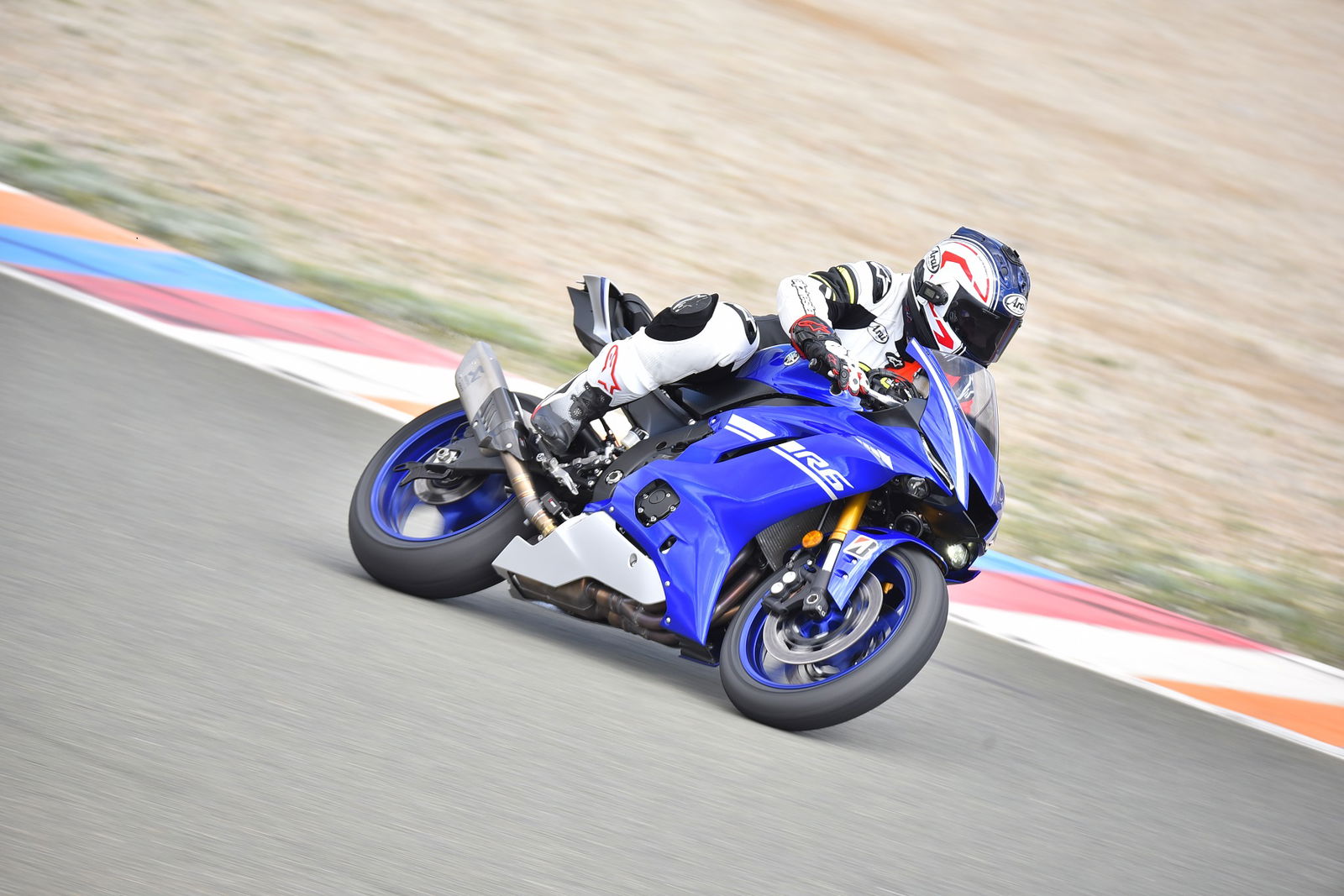
But what's this? A new Yamaha R6 for 2017? Complete with full Euro 4 compliance, sweet R1-type styling, electronic riding aids suite, and chassis upgrades? What are the crazy tuning fork folk up to?
Over the weekend, we went to Almeria circuit in Spain to find out, and, thankfully, the forecast was dry for what felt like the first time this year. Once suited-up, I give the new bike another once-over while listening to the pre-ride briefing.

It's a good-looking little beast, with the same purposeful racebike vibe to the front fairing as its bigger sibling, the R1. The tail unit is perfect for today's modern MotoGP aero fashion too, with a sleek, slim pillion seat, and large, audacious air vents either side. Sweet.
Of course, remembering the claimed power figures from the previous night's tech briefing, it's going to need all the aero help it can get. There's no such thing as a free lunch they say, and Yamaha's had to sacrifice a chunk of peak power to get the essential Euro 4 pass. Claimed maximum is down to 116.8bhp, the lowest claimed R6 power figure since 2004, and down 5-10bhp on the various versions of the post-2006 model.

You imagine that, had Yamaha spent a stack of cash on a totally revised motor, they could have made the regs, while adding a bit of power to what is, in the end, a decade-old basic engine design. After all, the likes of Honda's Fireblade and Suzuki's GSX-R1000 are now on sale with Euro 4 compliance, and loads more power than before – so it can be done. But that sort of cash investment is only worth doing if you're sure you'll get your money back again, and, clearly, neither Honda nor Suzuki think it is in the 600 class.
Anyway – enough of this pontificating. Lid on, visor down (ha!), into first, and off we go down pitlane, following BSS champion Tarran Mackenzie for a few sighting laps round Circuito de Almeria. I've been here a few times before, though not for a while, so I'm grateful for the fairly gentle re-introduction. It’s a tricksy track at times, with a couple of blind corner entries, plenty of altitude changes, and one or two corners where it's easy to drift out into the gravel on the exit if you're not careful. Erk. Sighting laps over, we're back into pit lane, then let out one at a time, well-spaced-out for the snappers.
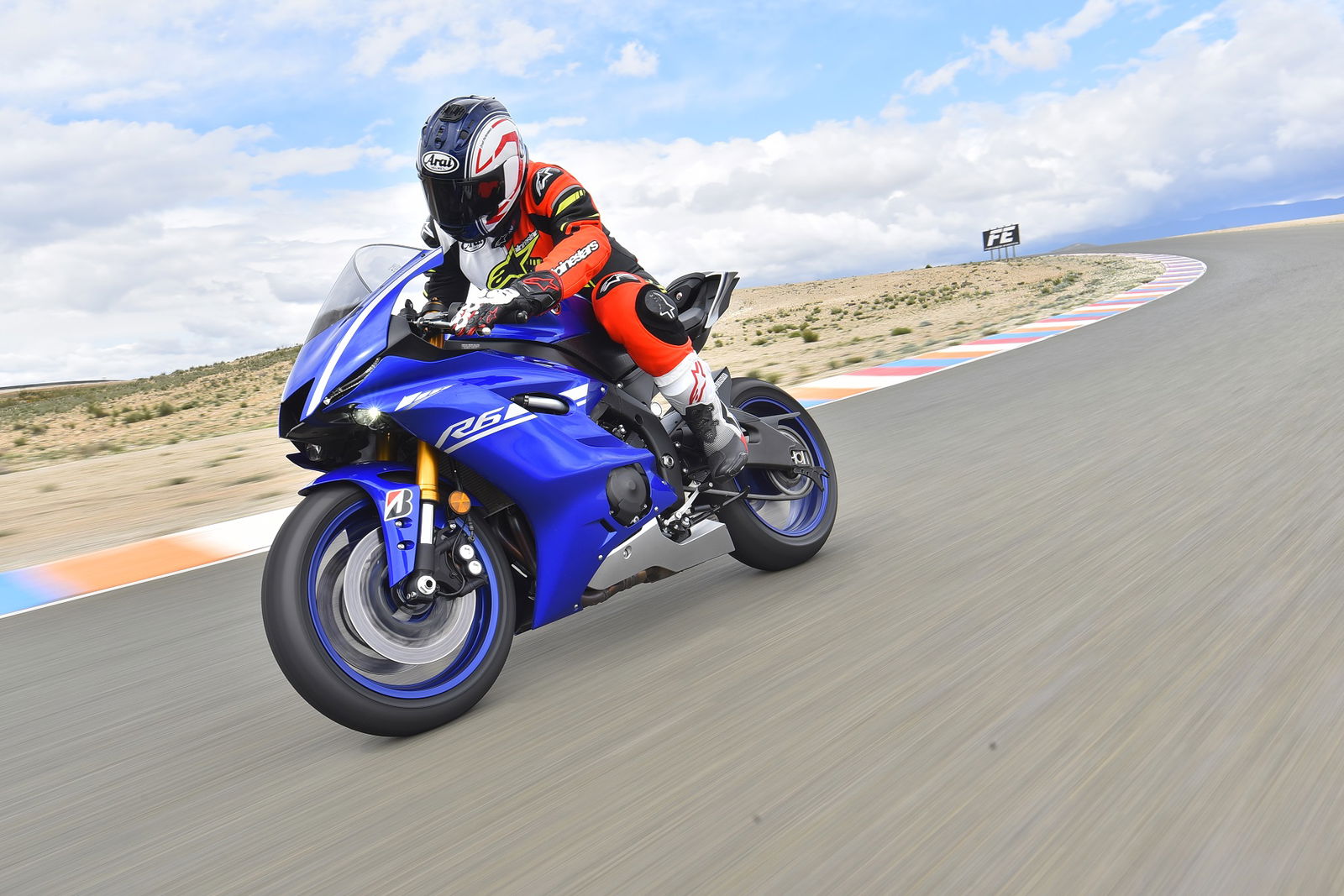
It takes me a few laps to get properly into the 600 groove. The last few track rides I've had have been on big bikes, and I've got out of the way of properly, properly wringing a bike's neck through the gears. Once I adjust my ear to the extra 5,000rpm needed on the little Yam though, it all gets much better – and the excellent new quickshifter makes upchanges fast and easy. Thrashing up towards 16,000rpm provides swifter progress – but it's still feeling a little bit flat. Climbing up the various hilly sections here, there's a lag to proceedings – the intake roar takes on that kinda yawning sound you get on a smaller bike when it's on full throttle but can't quite keep up. Hmmm.
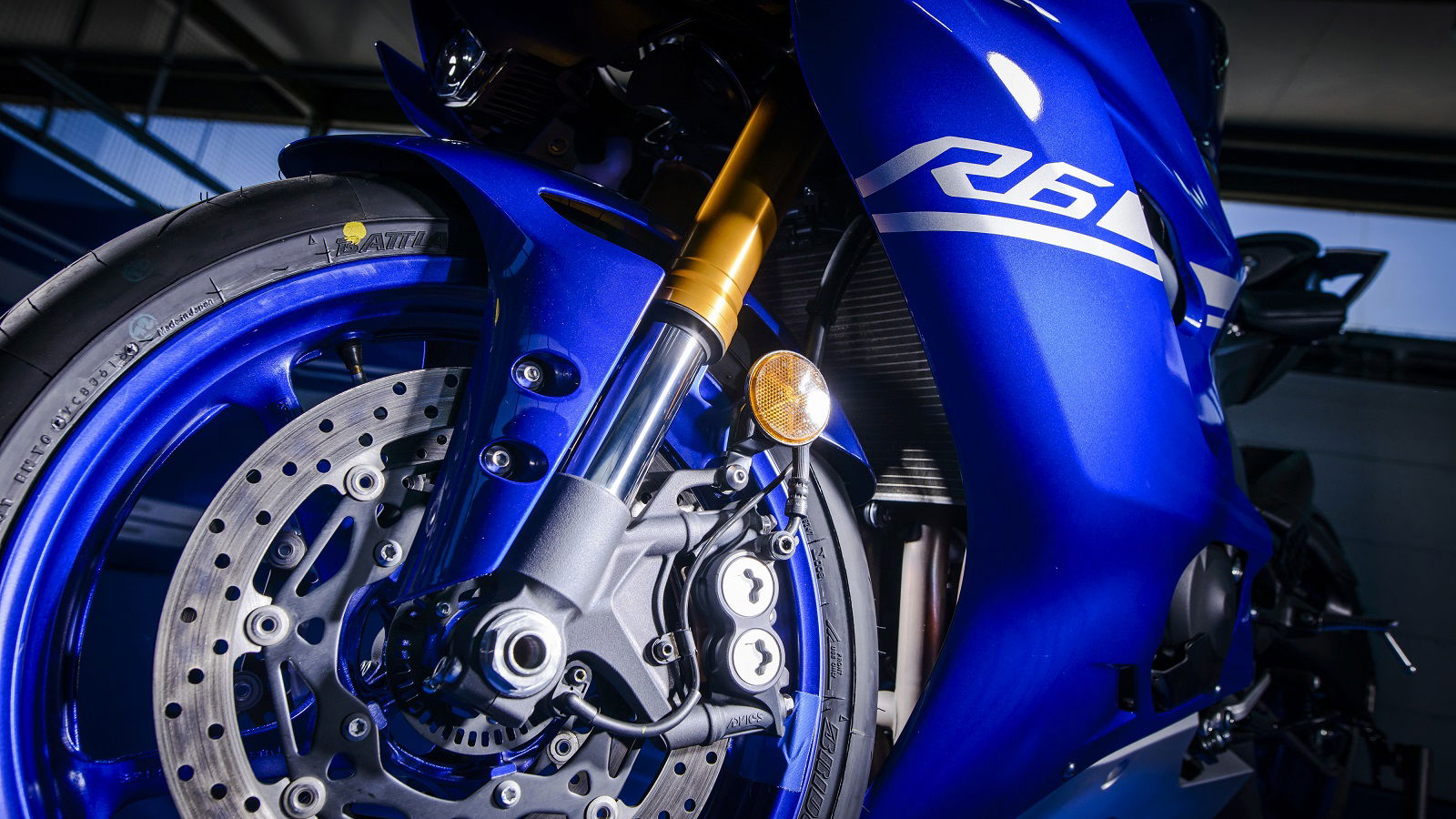
There's still plenty of work for me to do to get a tidy lap sorted here though, so I park my engine complaints for a moment and concentrate on the rest of the bike. The new brakes are superb – I don't remember the old ones being in any way poor, but the bigger discs have added to the power available, while still providing ample feel. The new ABS system is controversial amongst some of the racing journos on the test, who reckon it's getting in their way a bit. You can't switch it off, so unless you're going to bypass it totally electrically or hydraulically, you're stuck with it. I'm not finding any issues with it though, and for most of the folk, most of the time, I reckon it'll be fine.
Getting the most from a bike on track generally involves some racier rubber, and Yamaha has obliged today. They've not gone full-mental with plutocrat's slicks, but swapping the stock Bridgestone S21 road-sport rubber for R10 track-road hoops is almost as good. They're looking a bit tired and cut up after a couple of sessions – perhaps that's a track temperature thing; it's sunny but not warm today. They feel great on track though, with loads of grip and communication available. Even on my last session, when I'm fully into the groove, they're still more than up to the job of carting me round.

As is the rest of the chassis. The new forks feel planted and secure, and there's a real precision about the front end in particular. On the long, long left hander horseshoe turn three, you can experiment easily with your line, placing the bike just where you want it, no bother at all. The suspension doesn't feel like anything particularly special, but it just gets on with the job of controlling wheel movement and weight transfer in a calm, effortless fashion, leaving you free to consider other matters, like whether you could fit an R6 inside a hotel lift or not (you can, yes).
AFTER A COUPLE of sessions now and a break for lunch, I'm ready for a proper go at the circuit. Luckily for me, Yamaha broke out the good stuff. Now, sometimes on a bike launch, firms will try to sneak in the odd upgrade without saying much about it. A cheeky race pipe here, a pair of sticky tyres there, £10k of factory-fit luxury accessories slipped in at the back. Give the simple journos a nicer time and hope they don’t notice anything amiss…
… But the Yamaha is crystal clear: they don’t want to be building strangled Euro 4 bikes any more than we want to be riding them, and they want to show us what their baby can do in race trim. So they've brought along a few bikes with full race Akrapovic exhausts, and kit ECUs. Nothing more, the PR guys promise – no engine internal mods or nitrous kits, just the pipe and fuelling mods, much like a basic stage one tune that almost all sportsbike owners would consider anyway. The bikes are also missing their sidestands and numberplate hangers, but the suspension, brakes and tyres are all stock.
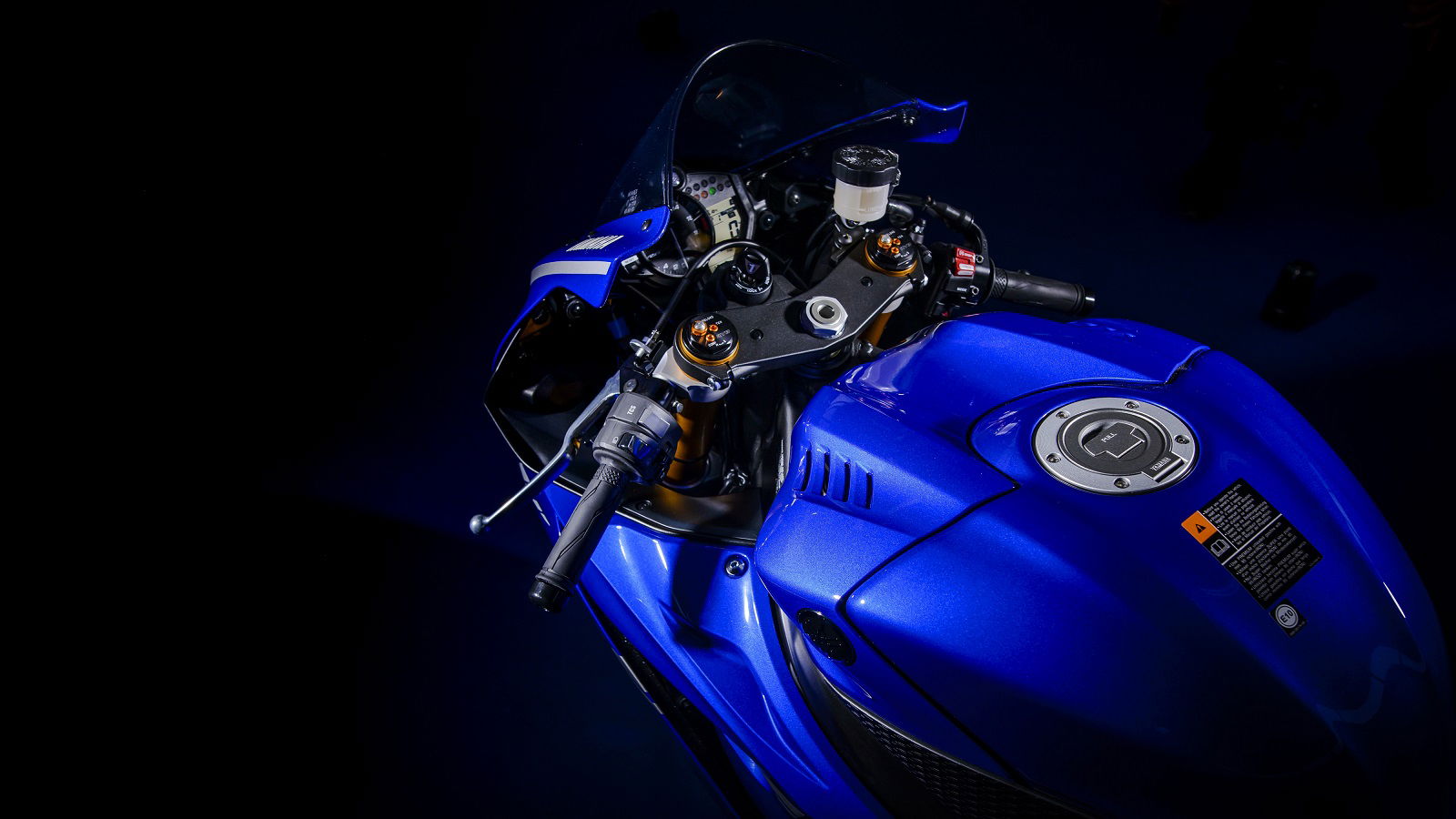
I jump on one of the kit bikes, and get ready to rock, and the lack of an ignition switch, and race-spec left-hand switchgear the only real sign that things have changed. But it soon becomes very clear that lots of stuff has changed. The motor feels totally liberated, far sharper, stronger, lustier, right up through the revs. There's none of those yawning pauses up Almeria's inclines, but an eager, barking charge. Down the big long back straight, where I could barely get into fifth gear on the stock bike, I’m well into sixth before hitting the anchors.
The difference is incredible – its actually closer to the comparison you'd expect when riding a stock 600 against a supersport tuned bike in the past. The clincher for this deal is the quickshifter as well – Yamaha's kit ECU adds in an auto-blipping downshifter function, which is utterly sexual on track. You can bang down the box like a total hooligan, and the ECU just sorts it all out, zinging the revs up to match, and (together with the slipper clutch) making life much easier.
Amazingly, despite the lack of any chassis mods, the kit bike feels a lot better in the corners too. Dumping around 10kg of mass by losing the stock exhaust system and some minor road kit has improved the handling a treat. It’s even better on the brakes and there's an extra level of planted stability mid-bend. It's a proper revelation, and in many ways, this feels just like the bike I was hoping to come here and ride…
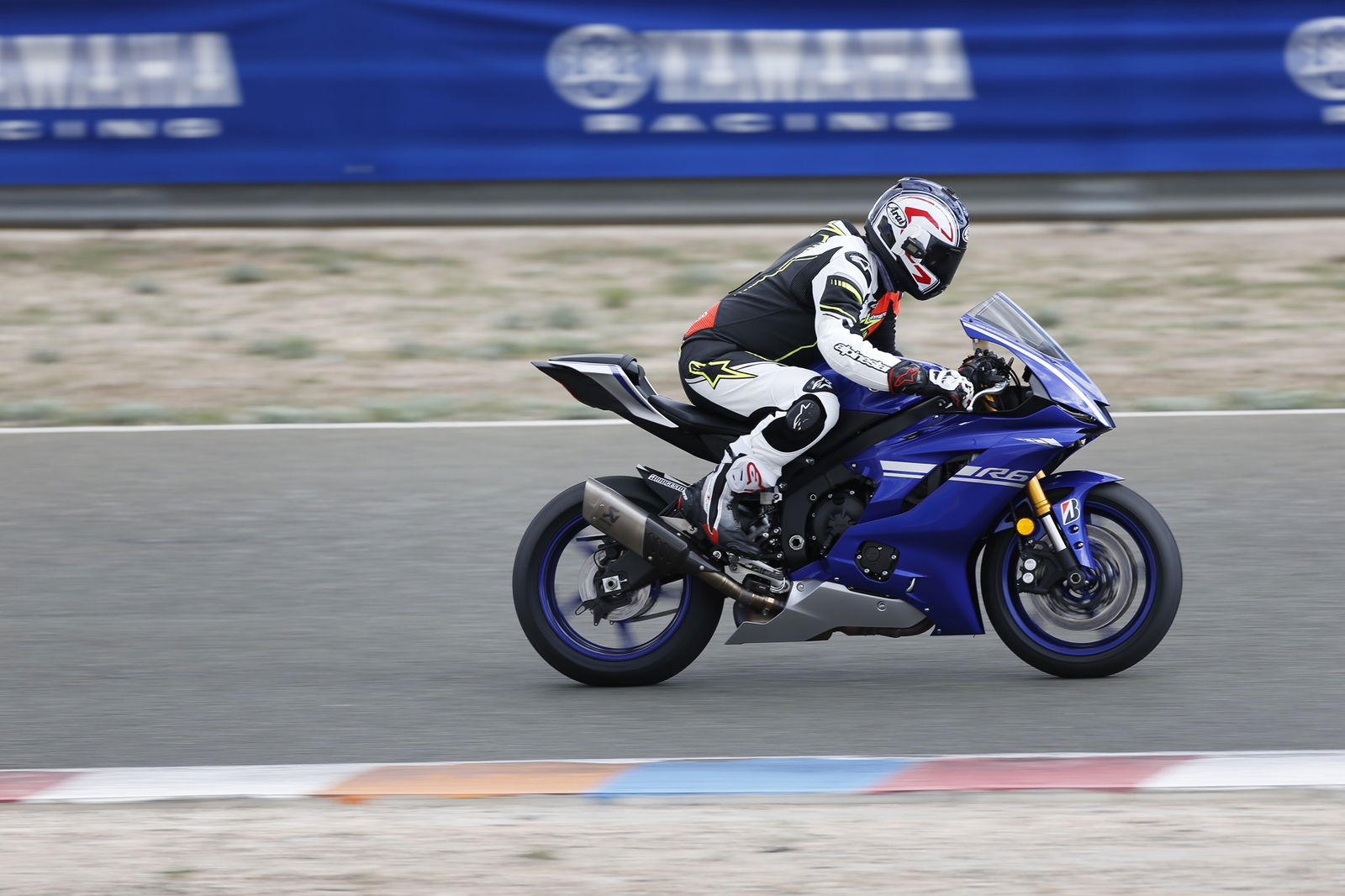
I got back on the stock bike for my final session, but it’s not the hardship you might think it would be. Riding the kit bike has helped me iron out some more wrinkles in my laps round here, and the final session of the day was the one where I had the most fun. Riding a 600 is much easier than a litre bike of course, and I've got more fitness reserves left than I would on a superbike. I'm able to keep her pinned all the way through a couple of the blind entries where I had been rolling off a little, and I'm just about able to put together bends five, six and seven into one smooth, fast, curving attack. The little Yam is sharp, agile, poised, yet still friendly and accessible as you push harder and harder.
The final chequered flag of the day is out now, and we’re done. Sat back in the pit garage, sucking down café solo and agua con gas like someone rescued from a desert island, I gather my thoughts on the new R6. It’s a shame the engine is a little breathless as stock – but I know that any owner who really needs the extra go will be fitting a pipe and a Power Commander (or ECU flash) anyway. And if you can afford the Brexit-boosted £11k price tag, you can probably stretch to another £1.5k for a classy pipe and fuel map too…
Those chassis updates are welcome of course, and the electronic aids keep the little Yam in the game tech-wise (although you could easily argue there's little need for rider power modes or even traction control on a well-fuelled 600 like this one).
The style update is also sweet, and little things like the LED lights, saucy tail unit and general high-quality feel all round makes me think this bike could easily stay around for another ten years. An R6-inspired renaissance in the supersport class for the 2020s? Why the hell not…
Tested: Yamaha YZF-R6
Price: £10,999
Engine: 16v inline-four, DOHC, liquid cooled, 599cc
Power (claimed): 116.8bhp at 14,500rpm
Torque (claimed): 45.5lb/ft at 10,500rpm
Frame: Aluminium twin spar
Suspension: Front - 43mm USD KYB forks, fully adjustable / Rear - KYB monoshock, fully adjustable
Brakes: Front - Dual 320mm discs, four-piston calipers and 220mm discs / Rear - Single-piston caliper
Wheels & tyres: Cast aluminium, with Bridgestone S21, 120/70 17 (front) and , 180/55 17 (rear)
Fuel capacity: 17 litres
Weight: 190kg (fully fuelled)
